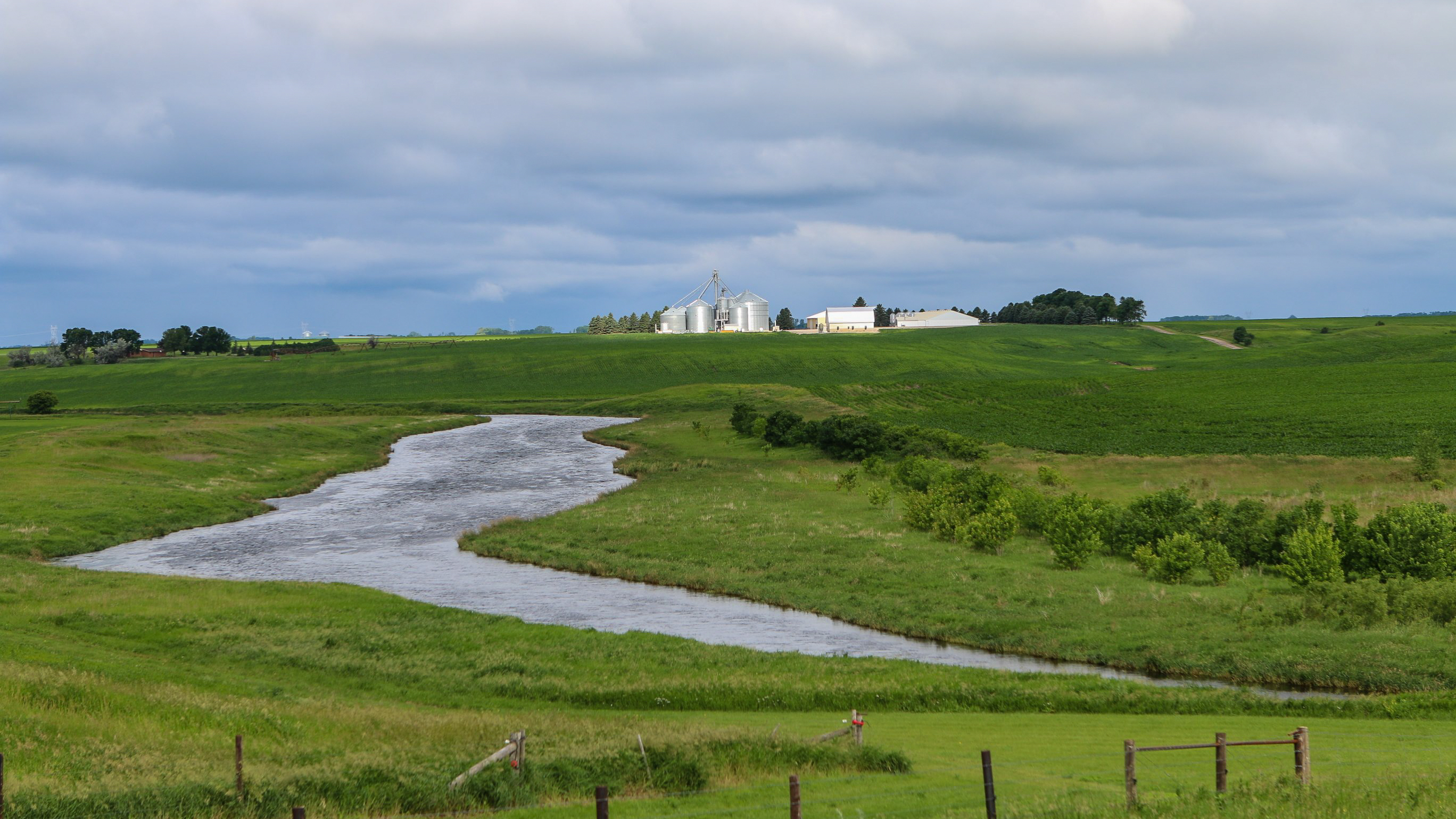
Waters of the United States

Farmers’ Clean Water Commitment
Farmers play a leading role in protecting our nation’s streams and wetlands. Over the last 15 years, the number of acres protected through wetland and buffer practices under the Conservation Reserve Program has more than doubled (from 2.5 million acres to 5.3 million acres).
More than 140 million acres of U.S. farmland are used for voluntary conservation efforts and wildlife habitats—an area equal to the states of California and New York combined.
Farmers advocate for and support commonsense rules that don’t require a team of consultants and lawyers to navigate.
What is WOTUS?
The Clean Water Act gives the EPA and Army Corps of Engineers jurisdiction over “navigable waters,” which are defined as “waters of the United States” (WOTUS). Nearly any activity that occurs within a WOTUS requires a permit (unless the activity is exempt), which can take years to obtain and cost tens or even hundreds of thousands of dollars. A simple misjudgment by a farmer in determining whether a low spot is or isn’t WOTUS could trigger huge civil fines and even criminal punishment.
Over the years, the EPA and the Corps have attempted to expand the definition of WOTUS to regulate land features that occasionally get wet. Perhaps most controversial, the agencies have attempted to regulate “ephemeral” features, or areas of land that become wet only in response to precipitation. They employed an ambiguous and subjective “significant nexus” test, claiming any such feature with a “significant nexus” to a WOTUS is itself regulated—and they acknowledged that almost any feature could be viewed as having a “significant nexus.” Farm Bureau has pushed back to protect farmers from the threat of potential prosecution just from farming their land or installing conservation measures. We have fought for clear rules that farmers and ranchers can follow as they work to care for our natural resources.
Where Things Stand on WOTUS
In January 2023, the EPA and the U.S. Army Corps of Engineers finalized a new WOTUS rulemaking that replaced the 2020 Navigable Waters Protection Rule. In their new rule, the agencies doubled down on the unworkable “significant nexus test” and created more risk and uncertainty for farmers and other landowners.
AFBF and others sued the EPA and the Corps over the 2023 WOTUS Rule. District Court rulings have prevented the 2023 Rule from going into effect in 27 states. The litigation is still ongoing, but a May 2023 Supreme Court decision in Sackett v. EPA forced EPA and the Corps to make revisions to their 2023 Rule.
Farmers and ranchers care about clean water and preserving the land, which are essential to producing healthy food and fiber and ensuring future generations can do the same. They deserve a rule that provides clarity and doesn’t require a team of lawyers to care for their land.
- AFBF President Zippy Duvall
Sackett v. EPA
In the May 2023 Sackett decision, the Supreme Court considered Chantell and Michael Sackett’s legal challenge to EPA’s claim that their residential lot contains wetlands that are “waters of the U.S.” The Court rejected EPA’s claim concerning the Sacketts’ land. In their decision, the Justices uniformly rejected the “significant nexus” test for identifying WOTUS. All nine Justices agreed that this test is a clear overreach of EPA’s authority. The Court in Sackett also established a clear definition of “waters of the U.S.” based on the language and intent of Congress in the Clean Water Act. This Supreme Court decision resolves years of uncertainty and provides clear boundaries for EPA and the Corps in any future enforcement or regulations.
AFBF, state Farm Bureau organizations, and many others supported the Sacketts before the Supreme Court. The Court's decision vindicates Farm Bureau’s long-fought battles over the definition of WOTUS and the need for certainty for farmers and ranchers. In fact, the Supreme Court adopted the exact position that AFBF argued for in its brief to the court. AFBF is grateful for the clarity that this Supreme Court decision provides for farmers and other landowners.
Final 2023 WOTUS Rule
After the Supreme Court ruling in Sackett, EPA and the Corps had an opportunity to write a WOTUS Rule that’s fair to farmers and stands the test of time, but instead they chose to revise only a slice of the rule that was rejected by the Court. The agencies eliminated the “significant nexus” test that all nine Supreme Court Justices rejected–but ignored other concerns raised by the Justices, 27 states, and farmers across the country about the rule’s failure to respect private property rights and the Clean Water Act.
The updated rule leaves in place much of the overreach that Farm Bureau and many others have been opposing, including the agencies’ vague “relatively permanent” standard. For this reason, AFBF will persist in its legal challenge to the rule to protect farmers from the threat of penalties and prosecution for simply farming their land.
Farmers and ranchers share the goal of protecting the nation’s waterways. They deserve clear rules that respect their dedication and careful stewardship.
Get Your Clean Water Facts
The Clean Water Act regulates our nation’s “navigable waters”—also called “waters of the United States.” It imposes huge fines or even criminal liability for putting almost anything into those waters without a federal permit.
The Clean Water Act recognizes that some surface waters should be regulated by the federal government, while some should be protected under state law. The Sackett v. EPA decision clarified which waters are subject to which type of protection, preserving state authority over many land features that only carry water when it rains.
The Safe Drinking Water Act is the primary law that protects all public drinking water supplies across the U.S. Changes to Clean Water Act regulations do not reduce Safe Drinking Water Act protections.
Stay up to date with AFBF’s efforts on WOTUS and other issues at FB Advocacy.
AFBF is a member of the Waters Advocacy Coalition.
Top Issues
VIEW ALL